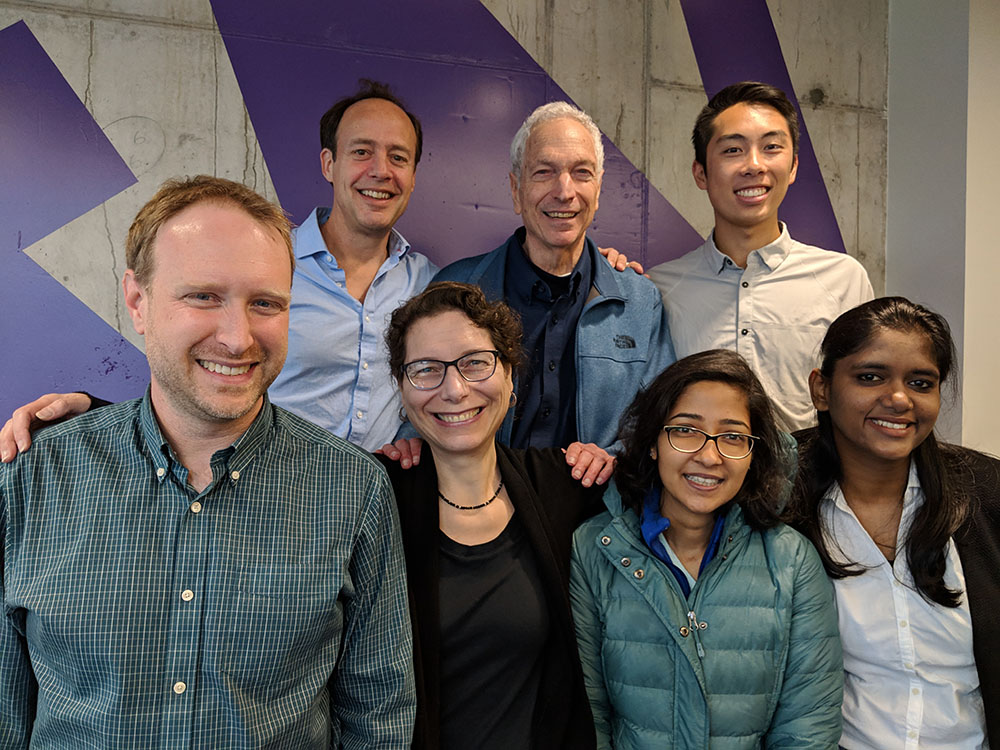Curious about a UW researcher?
Welcome to our blog series, “UW Researcher Spotlight.” These posts spotlight University of Washington researchers who, as principal investigator—or “PI”—lead their teams on the path from idea to impact with the support of CoMotion. The resulting innovations have been licensed to industry, spun out as a startup or licensed direct to the user from within the UW.
Stay tuned for profiles about UW researchers from computer ccience & engineering, life sciences, emerging tech, social sciences and more.
Meet Dr. Eric Seibel, Research Professor, Mechanical Engineering


Scanning Fiber Endoscope
School/College: College of Engineering
Department: Mechanical Engineering


BioVisia
Technologies: Scanning Fiber Endoscope, BioVisia and Untape
What problems do your innovations solve?
“Generally, all of these innovations produce tools that people can use, but to do that you have to find companies to make (the devices). They all improve health and well-being through technology using bio medical optics.”
When did you file your first ROI with CoMotion?: 1997
What can you tell us about your innovations?
Scanning Fiber Endoscope: This is an ultrathin and flexible scanning fiber endoscope (SFE) for the early detection and treatment of cancers within the body. The goal is to advance minimally invasive medical imaging by using ultrathin flexible endoscopes that allow access to regions of the body that were previously inaccessible to permit less invasive treatment of cancers before they have spread from their place of origin. It was licensed to startup VerAvanti for medical endoscopes and Magic Leap for AR displays as well as a few other related licenses.
BioVisia: In development, an optical method to detect biofilms, such as for food processing.
Untape: A heat release medical tape where an IR wand can cause tape to unstick but not burn the skin it is attached to. Medical tape removal is a big issue for the young and old.

What’s the latest?
“Our research paper using Magic Leap One should be publishing in the coming months.” [update 10/30/19: link to the Magic Leap One AR headset paper for dental applications]
“BioVisia is being presented as a poster, authored by undergrad Noah Baker, at SPIE Photonics West, San Francisco, CA, in Optical Fibers and Sensors for Medical Diagnostics and Treatment Applications XX, February 1 – 2, 2020.”
“Untape, for which I received my first Innovation Gap Fund, three or four years ago, and just a year ago filed a new patent. Our academic research that demonstrates feasibility of the Untape concept is now published in the Journal of Medical Devices, and I have a new graduate student who will help in prototyping and translating into clinical testing.”
Commercialization Advice?
“Start early and as a hobby! Don’t go all out at first, put your toe in the water, stretch it out, and you will learn a lot. Don’t have unrealistic expectations and don’t put all your eggs in one basket. It’s a slow growing organism, like having a child.”
What do you like most about working with CoMotion?
“Very professional, co-localized, always a pleasure to work with CoMotion. No egos.”
What are the CoMotion services and resources you have used and how did they help?
“The CoMotion Innovation Gap Fund – this is critical. Money is as important as getting a patent. With Innovation Gap Fund money, you can make a prototype and can then license to a company. And I got started with the Innovation Gap Fund through the mentor network. CoMotion is an efficient and effective patent office–all of my innovations have US patent protection. Also networking – my innovation manager, Ryan Buckmaster, came up with the person who liked our first project, an entrepreneurial MD from UW spinout KitoTech. Innovation managers are great at matchmaking. Very important.”
Bio:
Dr. Seibel received undergraduate and master’s degrees in Mechanical Engineering from Cornell University and University of California, Berkeley, respectively. After working four years in the medical (ophthalmic) device industry, Dr. Seibel designed and developed laser scanning microscopes for live tissue imaging for his doctorate from the University of Washington’s Department of Bioengineering in 1996. As a Research Scientist at the Human Interface Technology Lab, UW, Dr. Seibel invented the scanning fiber endoscope which has received funding from the former Washington Technology Center (WTC), National Institutes of Health (NCI, NIBIB, NIDCR), National Science Foundation, HOYA Corp., formerly PENTAX Corporation, in Tokyo, Japan, and now VerAvanti start-up in Redmond, WA. Since 2001 as a research faculty member at UW, Dr. Seibel has co-developed an optical projection tomography microscope with VisionGate Inc. with funding from WTC and NCI. Currently, Dr. Seibel is a Research Professor in the Department of Mechanical Engineering, adjunct in Bioengineering, Electrical & Computer Engineering, and Oral Health Sciences and Director of the Human Photonics Lab at UW.
Do you have a great idea? Connect with UW CoMotion
File your Record of Innovation or Request a Consultation with an innovation manager.
Subscribe to our newsletter to stay up to date about programs, resources and events.
About UW CoMotion: CoMotion at the UW is the collaborative innovation hub dedicated to expanding the economic and societal impact of the UW community. By developing and connecting to local and global innovation ecosystems, CoMotion helps innovators achieve the greatest impact from their ideas and discoveries.